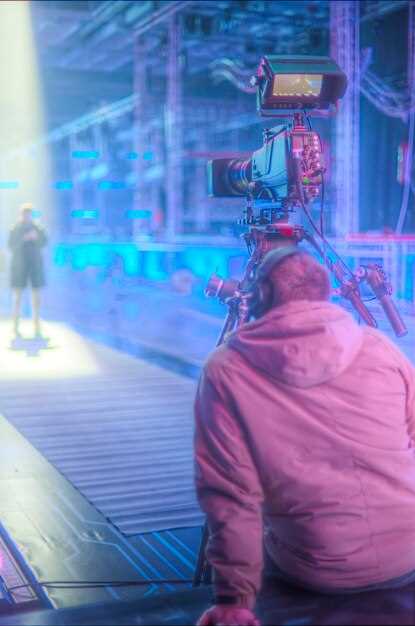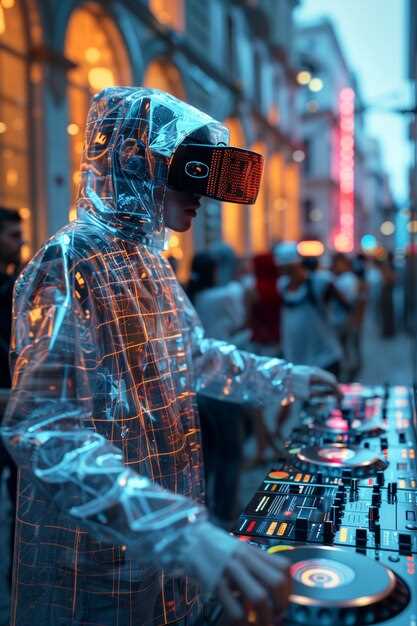Begin with a six-week pilot to integrate AI-powered planning and asset management into your workflow, with explicit metrics to measure advantage and throughput. This concrete start minimizes disruption while delivering early gains in coordination and speed.
In practice, building streamlined processes for videographers hinges on a few capabilities: object tagging, blur reduction, automatic color grading, and tonal alignment that preserves character while improving consistency. AI assists planning and asset management; it allows teams to deliver better results for audiences: clearer visuals, steadier motion, and consistent tone across clips. The most visible gains, seen across teams, come from automating repetitive tasks, freeing editors to focus on storytelling.
For marketers and broadcasters, integration with social channels like Facebook demands fast adaptation. AI can auto-suggest edits, generate captioning, and tailor cuts to tone and audiences, improving retention. The system offers a set of craft controls that refine the look while preserving brand voice. In practice, ensure that blur is minimized in low-light shots while preserving natural movement; this yields advantage for campaigns that run across multiple platforms.
Actionable steps for teams and managers: map three use-cases (planning, asset handling, post refinement); assign a cross-functional owner; set 60-day milestones to evaluate throughput; enforce a data-handling rule that ensures model outputs are auditable; maintain human oversight for creative decisions while delegating repetitive tasks to AI; track impact on audience engagement and clip quality.
Finally, invest in a building pipeline that aligns AI capability with storytelling goals. The object is to keep the character of the piece intact, while using AI to reduce repetitive edits, stabilize blur, and keep pacing that most engages audiences.
AI-Powered On-Set Tools and Real-Time Workflows

Adopt an integrated strategy: an AI-enabled on-set toolkit that feeds camera data, context cues, and actors’ markers into a single platform, delivering live lip-sync checks, scene tagging, and real-time dailies previews.
- Each department gains tailored signals that streamline direction, helps the operator, and comes with additional auto-checks to keep crews aligned with the creative brief; the system links the capture process to the post path.
- Real-time screening flags misalignment in lip-sync, gaze, or line timing, enabling immediate adjustments and reducing costly re-takes.
- Localizing and tagging metadata on-set: on-set AI generates localized captions, scene tags, and indicators for international releases, which speeds up the post path and ensures consistency.
- Removal of redundant takes and noisy cues is automated: immediate removal decisions narrow the post-load and keep the creative thread intact.
- Schedules and b-roll integration: a planner ties shot lists to real-time changes, so transitions and B-roll align with the current scene and the overarching plan.
- Large-scale operations benefit from a scalable framework and systems that support offline backups, role-based access, and traceable decisions, all within a single platform.
- Businesses see faster turnarounds and lower risk by reducing manual tasks and enabling human creators to focus on high-value decisions and creative direction.
- The workflows started with small pilots and have moved to multi-crew setups where the framework supports localizing content, guiding each scene, and preserving the director’s intent.
Generating shot lists and storyboards from scripts using NLP
Implement an ai-powered NLP pipeline to convert scripts into a ready shot list and an animatic instantly, with export to schedules and editing software.
Key capabilities and actionable outputs:
- Eliminates tedious manual drafting by automatically extracting scenes, actions, dialogue cues, and character entrances.
- During the first pass, identifies different locations, beats, and vocal moments to craft shot blocks and animatic frames.
- Transforming text into structured shot blocks and an animatic boosts consistency and speeds approvals.
- Ensuring major beats are captured and mapped to camera instructions, with alternatives for different angles and movements.
- Export options include JSON for the pipeline, printable shot lists, and low-res animatic frames that can be shared instantly.
- Removal of redundant metadata and notes to keep briefs concise and focused on current goals.
Data and workflow design:
- Define a scene graph: scene_id, beat_id, location, characters, and dialogue; tag each item with action type (movement, reaction, VO) and notes for vocal cues.
- Output fields: shot_no, camera, angle, movement, scale, duration, dialogue_snippet, VO_note, and a link to the animatic frame.
- Animatic integration: generate placeholder visuals with timing bars so a show can be evaluated before on-set work begins.
- Quality controls: run a current-check to ensure continuity, coverage, and alignment with the script’s tempo and mood.
- Data handling: store saved iterations and provide a changelog to support a professional partnership workflow.
Workflow integration and collaboration:
- Software interoperability: output feeds directly into planning tools used by editors and directors, reducing manual entry and errors.
- Partnership with key stakeholders: share animatics and shot lists via secure links for rapid feedback, including private groups on facebook for fast reviews.
- Review cadence: counselors and creatives can comment on specific frames, enabling a fast loop during approvals.
- Current standards: enforce a simple taxonomy for shot types and actions to maintain consistency across schedules and teams.
Practical setup and tips:
- Start with a major pilot experiment on a short script to benchmark time-to-output and accuracy of beat tagging.
- During testing, try different prompt variants to improve coverage and reduce misses; select the best prompting approach for ongoing work.
- Keep prompts simple yet expressive: request explicit mapping from each beat to one or more shot options and a corresponding animatic panel.
- Validate audio alignment: tag vocal cues clearly to support accurate lip-sync and VO placement in the animatic.
- Plan for long-term improvements: track improvements in speed, accuracy, and stakeholder satisfaction to justify expanding the use across shows.
Impact on show prep and efficiency:
By accelerating the translation of script into visual plans, teams improve improving alignment between text and visuals, save time on planning cycles, and enable a more confident, data-driven approach to storytelling. The approach transforms the early phases from lengthy, manual work into streamlined, auditable steps that professionals can trust.
Real-time camera framing, subject tracking and autofocus via vision models
Start with on-device vision framing and autofocus: run a lightweight model at 60fps, target under 25 ms per frame, and choose a platform that supports edge inference. This approach started as a pilot and meant fewer re-shoots, powering stable talent framing across scenes as subjects move.
Adopt a typical framework: detection, tracking, and autofocus decision modules. Each part should integrate with the camera firmware. A thorough comparison of algorithms (deep tracker versus Kalman) reveals trade-offs in latency, robustness, and memory use. When choosing, look for modules that can scale across multiple cameras and scene variations. Instead, compare several trackers in a controlled test to quantify latency, jitter, and drift. Cloning of framing presets lets you reuse proven setups across shoots and keeps results consistent.
Preparation relies on a basic kit: stabilized rig, calibrated lenses, controlled lighting, and test materials for calibration. Cloning of calibration profiles can speed setup across shoots; store all assembly instructions and requirements in a single repo. This preparation includes plus a checklist of features to verify before the first take.
During each scene, the tracker updates framing in near real-time. The system can show a live overlay, re-center as the talent crosses the target line, and trigger a take when alignment holds for a beat. It cannot overcorrect; keep framing within baseline and avoid over correction, so smoothing is applied to preserve line quality.
Performance targets include end-to-end latency under 25 ms, framing stability within ±2% of frame width, and re-framing delay under 40 ms in heavy motion. Collect metrics per scene, log autofocus confidence and tracking reliability, and ensure requirements are met for each show. Ensuring drift is caught early keeps things predictable.
Integrate the detection and autofocus outputs with lens drive and exposure controls to form a closed loop. Use a platform-agnostic API to simplify adoption across rigs, and consider cloning of core presets for rapid scale. Rigs that have modular power supplies ease on-site setup. The development path started with basic assembly and gradual expansion to multi-camera setups, while calibration and preparation remain central.
Auto-adjusting lighting presets and exposure recommendations from reference frames
Configure the pipeline to derive lighting presets from reference frames and apply frame-by-frame exposure refinements automatically. During setup, capture dozens of reference frames spanning the scene’s lighting conditions, color temperatures from 2700K to 6500K, and white balance targets. Build a reference histogram target: aim for midtones around 50–60% and 18% gray at 0 EV; set exposure adjustments in 0.25 EV steps with a cap of ±1.0 EV. Save presets as LUTs or color graphs in davinci format, clearly named by scene and profile to enable reuse anywhere.
During processing, combining dozens of frames yields a robust frame-by-frame model. The ai-assisted engine outputs per-frame exposure offsets and color-balance tweaks, then proposes a global lift to keep highlights safe. Before analysis, run reference frames through Topaz ai-powered denoise and sharpening to minimize noise that could skew exposure. Export adjustments as a structured set of micro-steps per scene; this addresses oversight by ensuring every frame aligns with the target range and color fidelity, making corrections easier and quicker.
Practical workflow: start with a base profile from the first reference frame; apply ai-assisted corrections to the remaining frames and verify results with a QA montage. Store per-frame offsets for easier reuse, and document decisions to support future refinements. This approach reduces labor-intensive tasks and delivers measurable savings in edit time while maintaining adherence to color standards across frames during a single shoot or across dozens of clips.
Role of ai-powered tools: davinci’s color tools provide a solid baseline; ai-assisted modules refine exposure and white balance, while Topaz enhances noise/detail in the reference set before analysis. The combination of simpler controls and frame-by-frame precision enables making fine-tuned results quickly and practically; maintain a documentation file that records presets, thresholds, and rationale for future revisions, ensuring easier handoffs anywhere.
Anywhere deployment benefits from a centralized preset library; technicians can apply them to new projects without retraining. Use clear standards for data and deliverables: per-scene preset families, versioning, and update notes. The ai’s role is to take routine tweaks, address oversight, and free operators to focus on creative decisions. With thorough documentation and a robust protocol, you gain savings while sustaining consistency across dozens of clips during a single shoot or across multiple projects.
On-set quality assurance: automated lens, focus and audio checks
Implement ai-based on-set QA that automatically tests lens calibration, autofocus consistency, and audio levels before every take to eliminate re-shoots and deliver time-saving gains. traditionally, crews performed these checks manually, wasting time between takes; with automation, creators can focus on the script and the idea, while the system flags issues early for large shoots.
Lens checks are powered by ai-based modules that compare real-time focus distance against lens metadata, detect focus breathing, and verify consistent depth-of-field across focal lengths. The system logs results and can run within the camera rig or on edge hardware, delivering a quick, actionable flag within seconds so there is minimal interruption.
Audio checks analyze signal paths with spectral analysis to detect clipping, excessive noise, and mic mismatches. The ai-based engine raises alarms if gain margins breach thresholds and suggests optimal gain, keeping dialogue clear for ADR and localization workflows. It also flags wind and rumble issues for quick mic swaps, a valuable feature for the crew.
The QA suite integrates with schedules via an API-backed dashboard, delivering a concise run log that can be pushed to the script supervisor. Previously, checks lived as separate apps; now they run within the same toolchain, eliminating tedious handoffs and enabling flexible workflows for large crews.
On the camera runway, the system captures a short calibration clip and runs a script cue test to validate focus transitions and audio sync, enabling experimental setups to be tested quickly before a full script run, nearly eliminating false positives.
When used across locations, the suite supports localization for operator prompts and report labels, with источник pointing to vendor notes for traceability. The data feed can be exported to editing pipelines and is similarly compatible with downstream teams.
The automated checks reduce tedious manual QA and provide a valuable baseline across camera families; it can be tuned for different lenses to minimize handling time and maximize the creative window. For example, when swapping lenses, the system rechecks back focus and distortions in under a minute, preserving the rhythm of the runway schedule.
Within such a framework, you gain a flexible, scalable approach that creators can rely on across large setups while maintaining experimental momentum. The localization features and detailed logs create a robust loop for upcoming shoots and help you iterate ideas efficiently, similarly improving results across the board.
Post-Production Automation and Creative Augmentation
Recommendation: deploy a modular, AI-assisted post-creation workflow with template-driven editing, color grading, captioning, and localizing assets to deliver consistent outputs quickly and with reduced manual effort, helping teams scale.
The approach is helping teams scale hundreds of projects by automating labor-intensive tasks such as asset tagging, scene detection, and basic compositing, freeing the hand of editors for high-value decisions and enabling marketing to respond faster.
Localization and e-commerce assets can be accelerated by localizing text tracks and imagery, including visualdub for accurate expression across markets; this yields accurate captions and expressive localization for regional campaigns.
Predictive models can predict audience response and forecast risk, enabling decisions that could reduce miss and rework; this supports faster delivery times and ensures consistency across times and anywhere.
Implementation steps include auditing asset pools, building one-click templates, integrating translation and dubbing services, and defining KPIs to measure gains. This multi-approach setup creates hundreds of concrete approaches to scale across e-commerce catalogs and regional markets, ensuring savings and faster go-to-market times.
| Area | Approach / Tech | Benefit | Time Saved |
|---|---|---|---|
| Color & Sound | AI-assisted grading, auto-sync | Accurate mood, consistent feel | 40-60% |
| Captions & Localizing | Automated transcription, localization | Better accessibility, broader reach | 20-50% |
| Visual Dubbing | AI voices / overlays | Localized expression at scale | 30-70% |
| Asset Tagging | Metadata tagging, searchability | Reduced miss assets, faster retrieval | 50-80% |
Neural LUT transfer and automated color grading for batch footage

Implement neural LUT transfer to automate color grading across batch footage. Start with a baseline of 4 LUT targets matched to common lighting: daylight, tungsten, mixed, and high-contrast indoor. Tag presets for in-house reuse and link them to busy schedules. This approach reduces labor-intensive tasks and can substantially lower costs.
Set up a three-stage pipeline: pre-process to normalize exposure and white balance; estimation uses intelligent algorithms to map frames to LUT targets; batch apply renders groups of clips within a window to keep a consistent look. The system automates perceptual matching and enables you to automate per-shot adjustments across batches, including scenes with actors under changing light.
Quality guardrails: compute Delta E across key tonal regions, compare histograms, and enforce a threshold before finalizing; keep a log of adjustments for dialogue and subtitle timing where applicable. This ensures accuracy even when recording conditions shift between takes.
Costs and resource planning: in-house tooling reduces spending on external colorists; the system can offer a faster turnaround during busy periods. This approach also preserves creative control and minimizes outsourcing.
Approaches and accessibility: this workflow is accessible to teams with mixed skills, and also scalable for multiple cameras and lighting setups. It supports recording window management and allows quick dialogue and subtitle alignment with the grade. Approaches include batch presets, per-scene tuning, and automated checks to catch drift early.
Automation scope: Neural LUT transfer cannot replace all artistic input; pair with human oversight for edge cases such as skin tones and cutting sequences. The approach enables intelligent previews and cutting-friendly previews, helping editors refine tone without delaying schedules.
Operational steps and outcomes: gather a reference shot set, calibrate color targets, train or adapt the model, build a library of LUTs, and run batch renders overnight or in windows when studios are quiet. Expect substantial time savings, predictable results, and a cleaner handoff for dialogue and subtitle workflows.
Background replacement and cleanup without green screens using generative inpainting
Recommendation: automated masking enabling localizing the subject, then use a generative inpainting model with a focused training workflow to replace the background, preserving color and lighting for results that are seamlessly integrated into the footage without a green screen.
Potential gains include time-saving, reduced costly shoots, saved post hours, and consistent background handling across clips. Agencies and organizations gain flexibility to swap backdrops for white or color sets, while most projects benefit from automated masking, reliable color transfer, and robust inpainting.
Implementation blueprint: calibrate lighting with a white reference to reduce color drift; perform localizing masking to define the foreground; run the generative inpainting model to replace the background; apply color matching to align with the scene grade; use a post-pass to preserve subtitle color and legibility; keep motion handling smooth so transitions stay natural.
Use cases span agency promos, corporate updates, training footage, and social assets where clean backgrounds enable focus on the subject while maintaining brand color and style across a library of clips.
Technology and data needs: lean on well-tuned generative models trained on representative footage; leverage automated pipelines to minimize human touchpoints; most tools support batch processing, enabling time-saving on large catalogs, while white balance consistency and color fidelity remain central to quality.
Quality control and risk: validate outcomes against varied lighting, motion, and occlusions; implement a fallback workflow to green-screen capture when edge cases exceed inpainting capabilities; maintain reliable subtitle placement and legibility through adaptive color management and contrast checks.



















